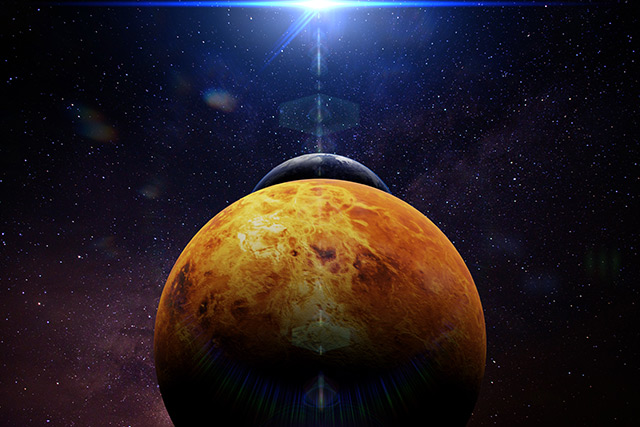Jupiter’s Europa may have pockets of water that could support alien life – study
05/24/2021 / By Virgilio Marin

Researchers from the Georgia Institute of Technology (Georgia Tech) suggest that Jupiter’s Europa may have pockets of water within its crust that may be able to support alien life.
Europa, the fourth largest of Jupiter’s moons, has high odds of being habitable. Past studies suggest that an ocean of liquid water lurks beneath Europa’s 15-mile-thick frozen crust. This extraterrestrial ocean contains salts that prevent water from turning into ice, which makes it ideal for life.
There is evidence of recent geological formations within Europa’s crust, including small, dark, dome-like features called lenticulae. Discovered by the National Aeronautics and Space Administration (NASA), lenticulae are thought to form above bodies of saline water half a mile to three miles beneath the surface.
To learn more about lenticulae, the researchers developed numerical simulations using images taken using NASA’s Galileo spacecraft, which explored Jupiter and its moons between the 1990s and 2000s. The spacecraft, launched in 1989, spotted lenticulae spattered across Europa’s surface.
The simulations showed that lenticulae might contain shallow pockets of water that freeze after only a relatively short period of time. But the researchers found that lenticulae might be actively forming at present, which would mean that these pockets remain liquid to this day.
“We think there is still shallow water under some of these features,” lead author Chase Chivers, a graduate student at Georgia Tech’s School of Earth and Atmospheric Sciences, told New Scientist.
He estimated that hundreds of these liquid water pockets probably exist across Europa’s crust. He added that they might explain the plumes erupting from its surface, which previous studies suggested came from the subsurface ocean.
Mark Fox-Powell, a research fellow at the U.K.’s Open University, who was not part of the study, said that the pockets could be habitats for extraterrestrial life.
“If there is life in the subsurface ocean and it gets incorporated into the ice shell and later re-melted, that could kick-start a community,” he told New Scientist, adding that this microbial community is doomed because the pocket would eventually refreeze. (Related: Astronomers say that Europa may have alien life, and it won’t be hard to find.)
The findings of the study were published in the journal JGR Planets.
Europa’s ocean could be habitable
Plenty of studies suggested that Europa’s subsurface ocean could be habitable. Last year, a study led by NASA researchers provided further support to this idea.
Mohit Melwani Daswani, a scientist at NASA’s Jet Propulsion Laboratory, and his colleagues modeled the composition and physical properties of Europa’s core, mineral layer and ocean using data from the Galileo mission.
Their models suggested that metamorphism could take place in ocean worlds like Europa. If this were the case for the Jovian moon, heating and increased pressured caused by radioactive decay or subsurface tidal movements would break down water-bearing minerals, releasing trapped water. The breakdown of minerals would make the water mildly acidic, with high concentrations of carbon dioxide, calcium and sulfate.
Daswani noted that Europa’s ocean could still be acidic to this day. But their models, coupled with evidence of chloride on Europa’s surface, suggest that the ocean most probably became chloride-rich. This would mean that its composition became more like the composition of Earth’s oceans.
“We believe that this ocean could be quite habitable for life,” Daswani said, adding that Europa is among the best places in the solar system to look for alien life.
“Our models lead us to think that the oceans in other moons, such as Europa’s neighbor Ganymede, and Saturn’s moon Titan, may also have formed by similar processes,” Daswani went on. “We still need to understand several points though, such as how fluids migrate through Europa’s rocky interior.”
NASA is currently working on its Europa Clipper mission for a 2024 launch. The spacecraft will arrive at Jupiter by the end of this decade and will determine whether Europa and other ocean worlds could support life.
Read more studies supporting the existence of alien life at Space.news.
Sources include:
Tagged Under: alien life, aliens, astronomy, cool science, cosmic, discoveries, Europa, Europa Clipper, extraterrestrial life, extraterrestrial oceans, future science, habitability, Jupiter, Jupiter's moons, lenticulae, NASA, oceans in space, outer space, planets, research, solar system, Space, space exploration
RECENT NEWS & ARTICLES
COPYRIGHT © 2017 SPACE.COM
All content posted on this site is protected under Free Speech. Space.com is not responsible for content written by contributing authors. The information on this site is provided for educational and entertainment purposes only. It is not intended as a substitute for professional advice of any kind. Space.com assumes no responsibility for the use or misuse of this material. All trademarks, registered trademarks and service marks mentioned on this site are the property of their respective owners.





















